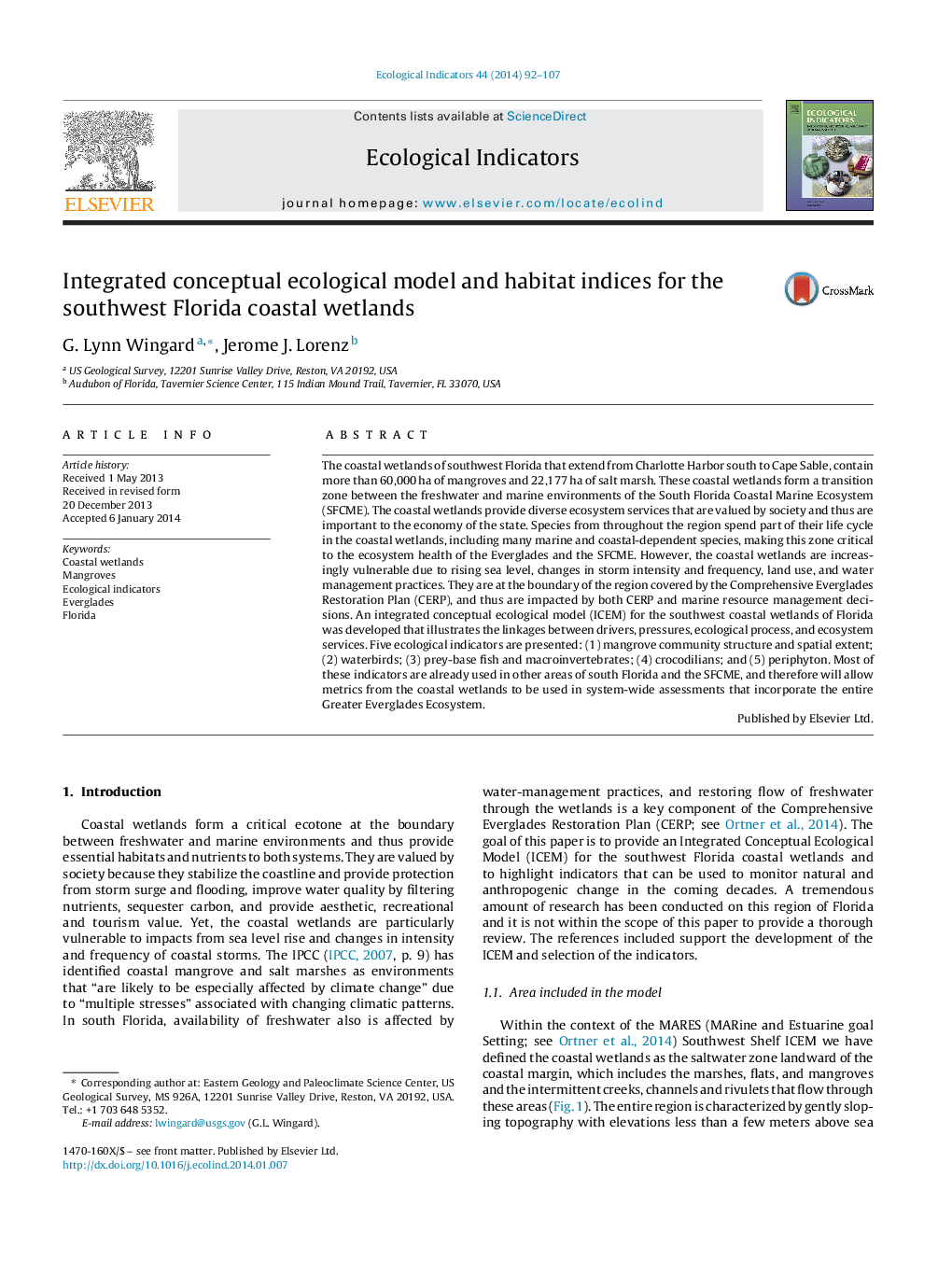| کد مقاله | کد نشریه | سال انتشار | مقاله انگلیسی | نسخه تمام متن |
|---|---|---|---|---|
| 4373128 | 1617157 | 2014 | 16 صفحه PDF | دانلود رایگان |
عنوان انگلیسی مقاله ISI
Integrated conceptual ecological model and habitat indices for the southwest Florida coastal wetlands
ترجمه فارسی عنوان
یک مدل اکولوژیکی مفهومی و شاخص های زیستگاه برای تالاب های ساحلی جنوب غربی فلوریدا
دانلود مقاله + سفارش ترجمه
دانلود مقاله ISI انگلیسی
رایگان برای ایرانیان
کلمات کلیدی
موضوعات مرتبط
علوم زیستی و بیوفناوری
علوم کشاورزی و بیولوژیک
بوم شناسی، تکامل، رفتار و سامانه شناسی
چکیده انگلیسی
The coastal wetlands of southwest Florida that extend from Charlotte Harbor south to Cape Sable, contain more than 60,000Â ha of mangroves and 22,177Â ha of salt marsh. These coastal wetlands form a transition zone between the freshwater and marine environments of the South Florida Coastal Marine Ecosystem (SFCME). The coastal wetlands provide diverse ecosystem services that are valued by society and thus are important to the economy of the state. Species from throughout the region spend part of their life cycle in the coastal wetlands, including many marine and coastal-dependent species, making this zone critical to the ecosystem health of the Everglades and the SFCME. However, the coastal wetlands are increasingly vulnerable due to rising sea level, changes in storm intensity and frequency, land use, and water management practices. They are at the boundary of the region covered by the Comprehensive Everglades Restoration Plan (CERP), and thus are impacted by both CERP and marine resource management decisions. An integrated conceptual ecological model (ICEM) for the southwest coastal wetlands of Florida was developed that illustrates the linkages between drivers, pressures, ecological process, and ecosystem services. Five ecological indicators are presented: (1) mangrove community structure and spatial extent; (2) waterbirds; (3) prey-base fish and macroinvertebrates; (4) crocodilians; and (5) periphyton. Most of these indicators are already used in other areas of south Florida and the SFCME, and therefore will allow metrics from the coastal wetlands to be used in system-wide assessments that incorporate the entire Greater Everglades Ecosystem.
ناشر
Database: Elsevier - ScienceDirect (ساینس دایرکت)
Journal: Ecological Indicators - Volume 44, September 2014, Pages 92-107
Journal: Ecological Indicators - Volume 44, September 2014, Pages 92-107
نویسندگان
G. Lynn Wingard, Jerome J. Lorenz,
